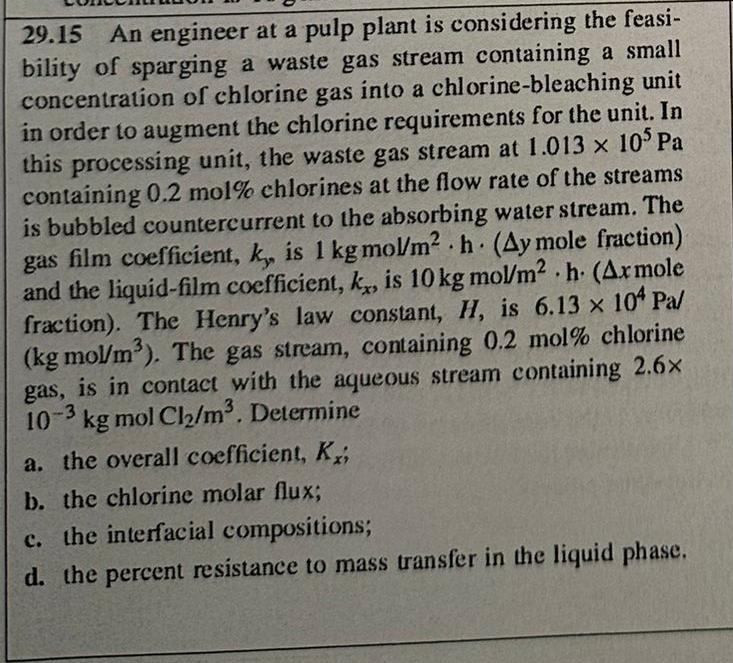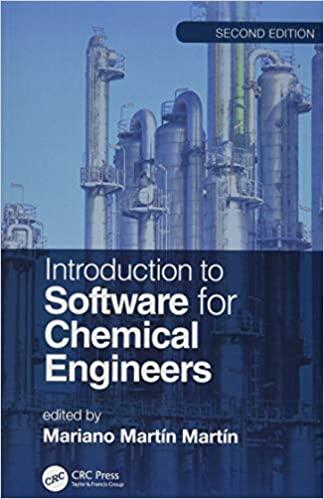Answered step by step
Verified Expert Solution
Question
1 Approved Answer
2 9 . 2 0 Consider the waste treatment operation proposed in the figure below. In this process, wastewater conraining a TCE concentration of 5
Consider the waste treatment operation proposed in the figure below. In this process, wastewater conraining a TCE concentration of gmo enters a clarifier, which is essentially a shallow, wellmixed tank with an exposed liquid surface. The overall diameter is and the maximum depth of the liquid in the tank is The clarifier is enclosed to contain the gases often quite odorous that are emitted from the wastewater. Fresh air is blown into this enclosure to sweep away the gases emitted from the clarifier and is then sent to an incinerator. The TCE content in the effluent gas is mol whereas the TCE content in the effluent liquid phase is gmolTC liquid. The clarifier operates at atm and a constant temperature of In independent pilot
plant studies for TCE, the liquid film masstransfer coefficient for the clarifier was, gmo whereas the gas film masstransfer coefficient for the clarifier was gmol
Equilibrium data for the airTCEwater system at are represented by Henry's law in the form with atm. The molar density of the effluent liquid is gmo
a What is the overall masstransfer coefficient based on the liquid phase,
b What is the flux of TCE from the clarifier liquid surface?
c What is the inlet volumetric flow rate of wastewater, in units of needed to ensure that the liquid effluent TCE concentration is gmolTC
An engineer at a pulp plant is considering the feasibility of sparging a waste gas stream containing a small concentration of chlorine gas into a chlorinebleaching unit in order to augment the chlorine requirements for the unit. In this processing unit, the waste gas stream at containing mol chlorines at the flow rate of the streams is bubbled countercurrent to the absorbing water stream. The gas film coefficient, is kgmo mole fraction and the liquidfilm coefficient, is mole fraction The Henry's law constant, is The gas stream, containing mol chlorine gas, is in contact with the aqueous stream containing kgmolCl Determine
a the overall coefficient, ;
b the chlorine molar flux;
c the interfacial compositions;
d the percent resistance to mass transfer in the liquid phase.

Step by Step Solution
There are 3 Steps involved in it
Step: 1

Get Instant Access to Expert-Tailored Solutions
See step-by-step solutions with expert insights and AI powered tools for academic success
Step: 2

Step: 3

Ace Your Homework with AI
Get the answers you need in no time with our AI-driven, step-by-step assistance
Get Started


